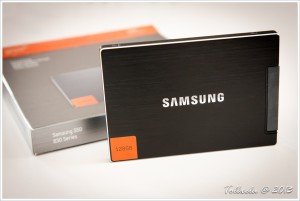We’ve all been there, whether its the hour glass for Windows users or the rainbow circle for Macs, when your computer is slowing down on a regular basis it isn’t a good sign.
The positive thing is, there’s a bunch of things you can do to help nudge the speed and performance of your machine before you start panicking and planning to get rid of it! I’ve unfortunately been there one too many times and more often than not, there’s a relatively easy solution. I’d like to outline just a few methods that have previously worked for me, but please feel free to add to my points in the comments section at the end of the post. That said, let’s dive right in!
Disk Defragmentation
As you save, edit and move files, your hard disk and that data become fragmented since the changes and file modifications end up being saved in multiple locations. That means that the drive becomes slower because it has to look in more places for what you need.
Microsoft quotes the disk defragmenter as “a tool that rearranges the data on your hard disk and reunites fragmented files so your computer can run more efficiently.”
Reducing Amount Of Start Up Applications
This part is quite simple. The more things your computer has to open during start up, the longer it’ll take! Be sure to adjust your settings and select only the applications you need, anything else can be opened as and when you need it.
If you have software like CCleaner installed, it can do this for you (be it for Mac or PC). Alternatively, Wikihow has tutorials on how to change start up programs on Windows 7 and how to manage applications on Mac.
Upgrading The RAM
Upgrading the amount of RAM (Random Access Memory) can significantly boost the performance of a computer that is slowing down frequently. How? The more RAM a computer has, the more applications it can handle at once. Too little RAM and the computer won’t be able to allocate resources to complete tasks set by you, which is what causes it to become sluggish.
It’s probably the single, most easy hardware upgrade you can make on your computer. This video from Unboxtherapy for example, clearly demonstrates how easy it is to pull off on a MacBook Pro. The great thing about a RAM upgrade is the fact that anyone can do it, especially nowadays when there are plenty of online tutorials dedicated to your particular PC or laptop.
Upgrading Your Hard Drive
A traditional hard drive uses mechanical components to read data, making it vulnerable to damage and mechanical errors. On the other hand, Solid State Drives (SSDs) are made of flash memory chips which gives them more speed, durability & reliability (since there aren’t any moving parts to be damaged), no noise and their slimline form factor means that they can be used in Ultrabooks and Tablets.

Watch it in action
Watching a simple boot up test clearly demonstrates the ability of an SSD drive to bring an older computer back to life. A MacBook that would generally take 40 or more seconds to boot up with a traditional hard drive would take approximately 20 seconds using an SSD. Now that is impressive.
This other test shows the speed at which it’s able to launch applications.
–
All in all, there are plenty of options that you could consider to boost the performance of your computer but I’ve only mentioned my preferred ones. If there’s something that you’ve tried yourself in the past, drop a line in the comments section below and let us know how it’s worked for you.
–
The featured image for this post was courtesy of Geralt

